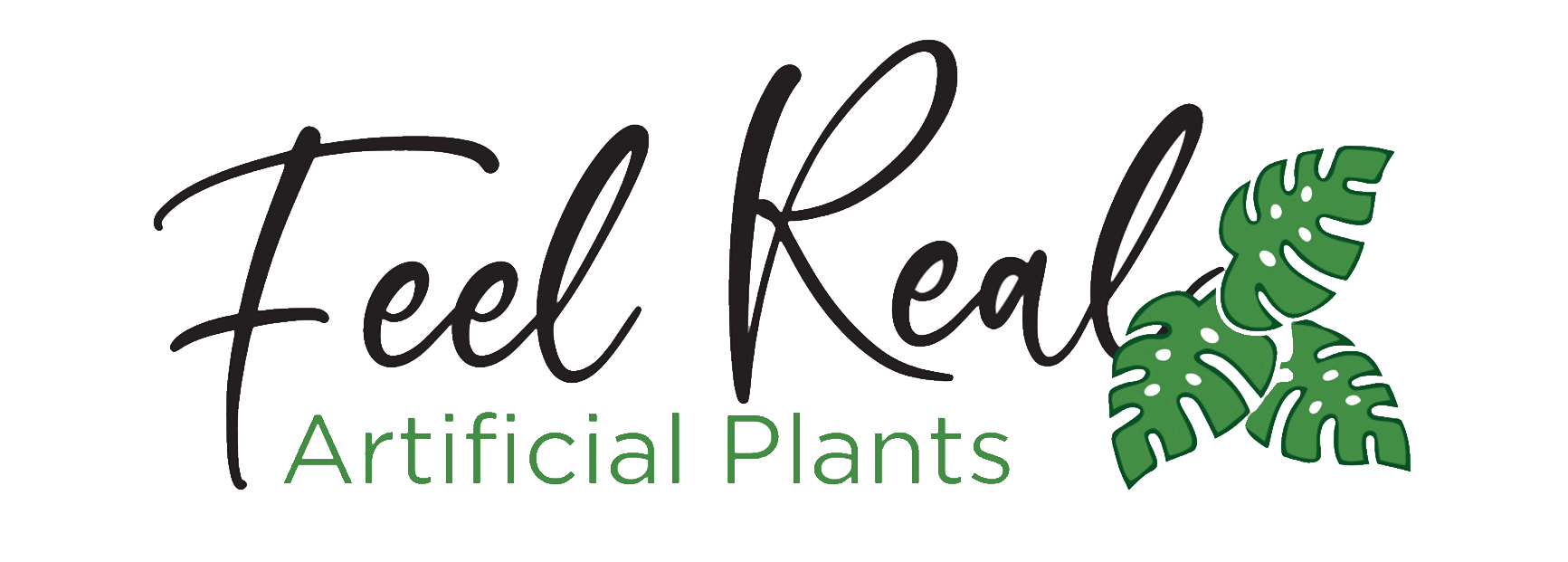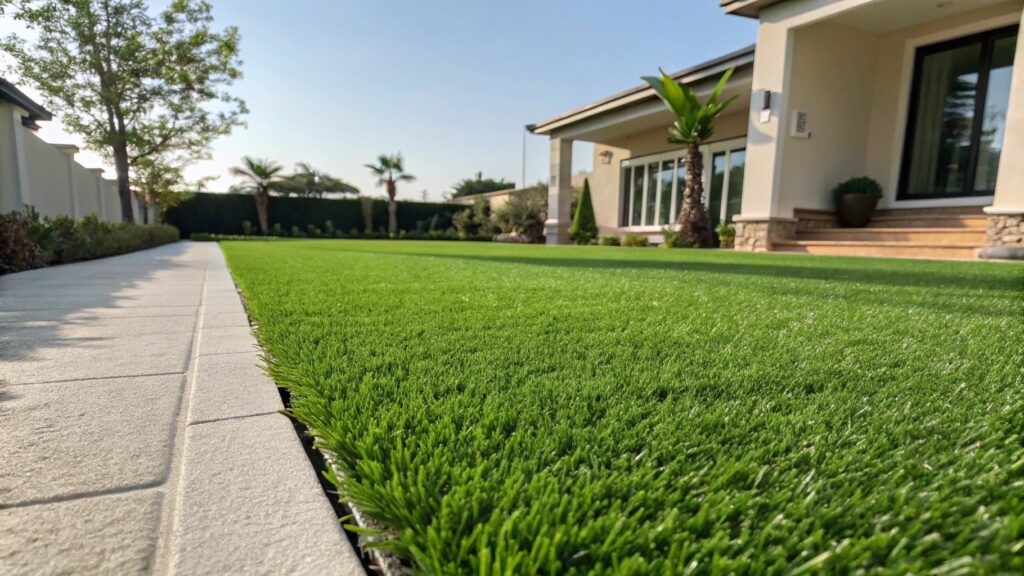Artificial grass has evolved over the years since its stiff plastic days. Today fake grass has become the go-to choice for many, offering low-maintenance, lush, and the perfect alternative to natural lawns.
But, how do you choose the best artificial grass for your space?
Whether you’re looking to create a pet-friendly area, outfitting your backyard, or thinking of a rooftop oasis, the fake grass you choose can either break or transform your space.
Let’s look at the different types of artificial turf, compare their features, and check out the hottest trends in the market to help find the perfect faux grass for your specific needs.
Types Of Artificial Grass by Material: The Core Three
When searching for the perfect synthetic turf for your space, the material of the grass plays a significant role in how the grass feels, looks, and performs. Fake grass is mainly grouped into three categories: nylon, polyethylene, and polypropylene. Each category has its weaknesses and strengths and it’s perfect for specific applications.
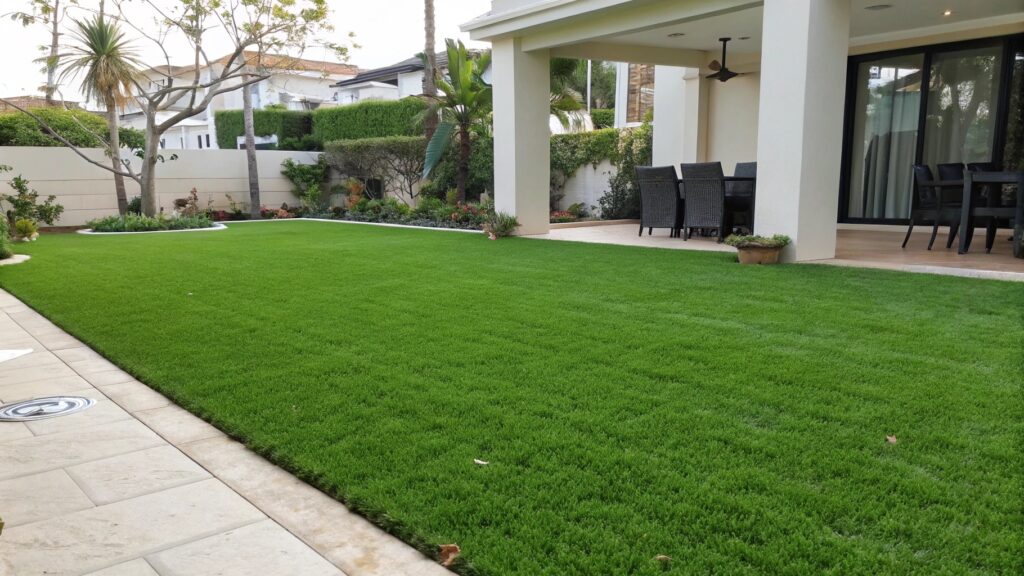
Nylon: The Most Durable and Resilient Option
If you’re in the market for high-performance faux grass, then this is the material for you. Nylon artificial grass excels in terms of durability and its capacity to handle intense sun exposure, heavy foot traffic, and adverse temperatures without compromising its color and shape. The nylon carpet is perfect for high-traffic areas such as gyms, soccer/baseball pitches, and sports areas.
However, it is prudent to note that the durability and resilience come at a price – you’ll have to pay for its premium quality.
Polyethylene: The Most Realistic and Popular Choice
If you’re looking for artificial grass that closely resembles natural grass, then polyethylene should be your go-to choice. This type of grass comes with a vibrant green color and a soft texture that closely mimics naturally occurring grass. Polyethylene material is also UV-resistant and safe for kids and pets.
The faux grass strikes the perfect balance between realism and durability making it perfect for play areas, decorative landscapes, and residential lawns.
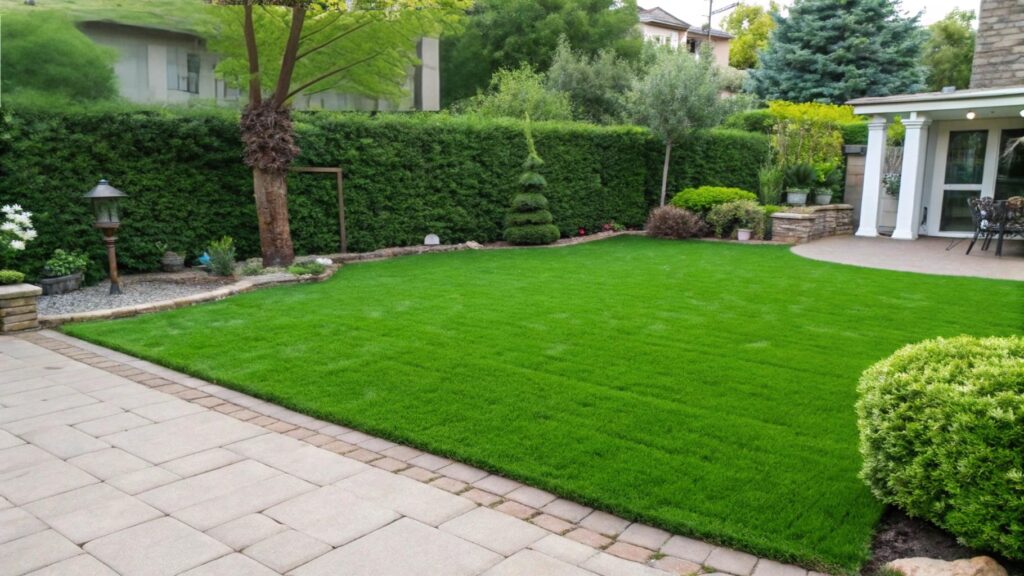
Polypropylene: The Most Budget-Friendly Option
The last category of grass carpet is the most affordable grass available in the market today. Polypropylene is the cheapest of them all, and as expected, the lowest in quality and consequently, low durability.
This type of faux grass is ideal for areas with little to no (minimal) foot traffic areas. It can be used for indoor installations and decoration purposes. While polypropylene won’t be ideal for high-use spaces, it can come in handy for low-budget projects and temporary setups.
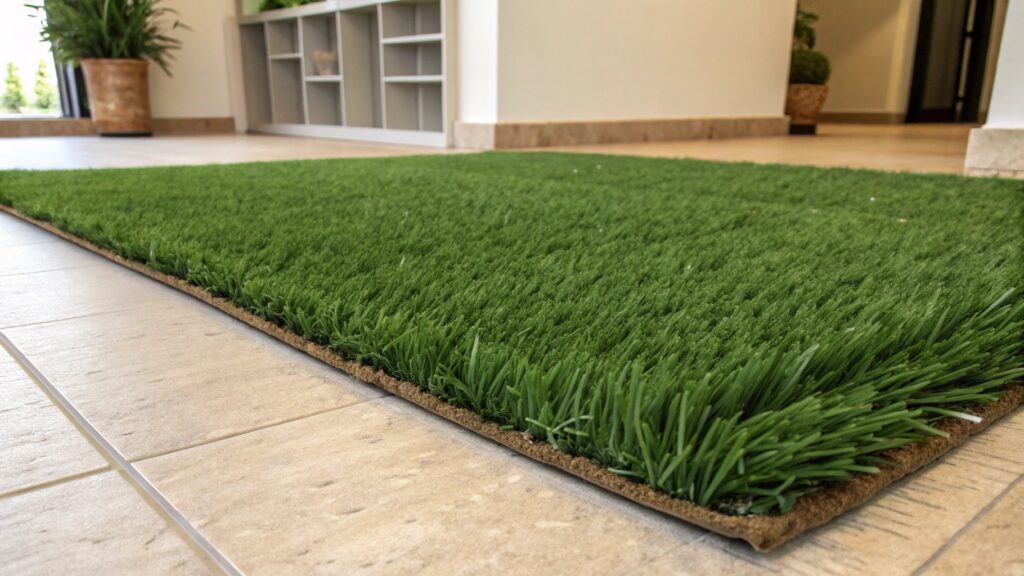
Key Features to Consider When Choosing Artificial Grasses
Now that we have looked at different materials used by artificial grass manufacturers, what else should you look for when choosing the ideal fake grasses for your space? Let’s look at various technical features for aesthetics and performance, beyond the material.
Pile Height
The length of the grass blades in question is what is known as the pile height. Go for shorter piles (typically 0.5-0.7 inches) if you’re in the market for synthetic grass for sports fields, play areas, or simply putting greens. Longer pile heights(between one and 2.5 inches), on the other hand, give a more natural and lusher look perfect for residential lawns.
Face Weight And Density
Face weight is usually the amount of material that is used for every square yard. A higher face weight means a denser, more luxurious, and more durable turf. Dense grass is not only good-looking but also durable under pressure.
Pro Tip: For lawns and pet areas go for a face weight of 50-90 oz.
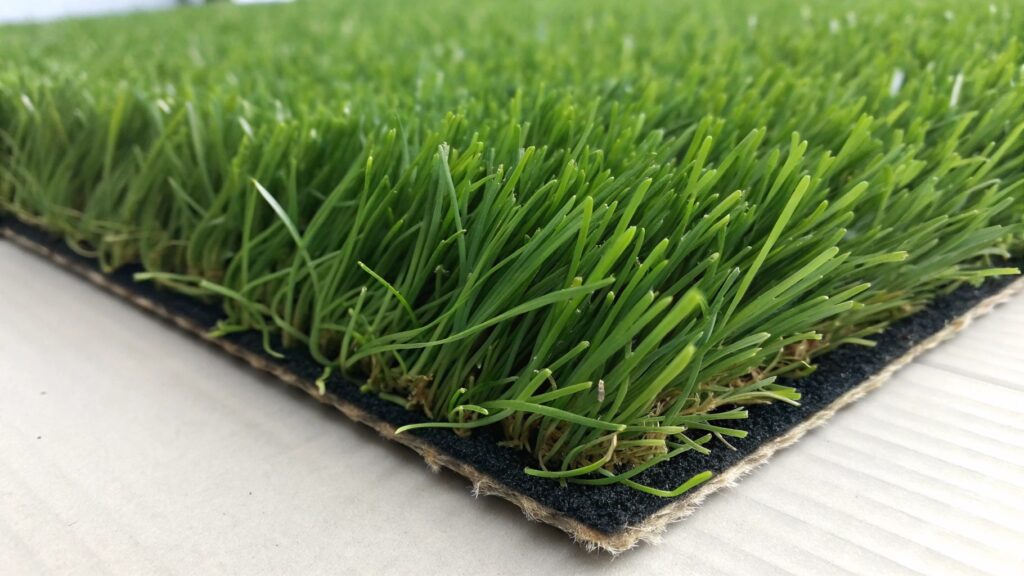
Backing And Drainage
A great backing will keep the blades structurally secure and ensure the perfect drainage. If you are looking to install your turf in outdoor spaces go for artificial grass with strong latex or polyurethane backing that comes with perforations for fast water runoff especially if pets will be accessing the space.
Infill
Infill refers to the material brushed into the artificial grass that adds cushioning and keeps the blades upright. The most used infill includes organic infill, rubber granules, zeolite, and silica sand. The infill you go for will affect drainage, foot feel, and durability. Choose the infill that perfectly fits your needs. For instance, if you keep pets, choose an odor-controlling infill.
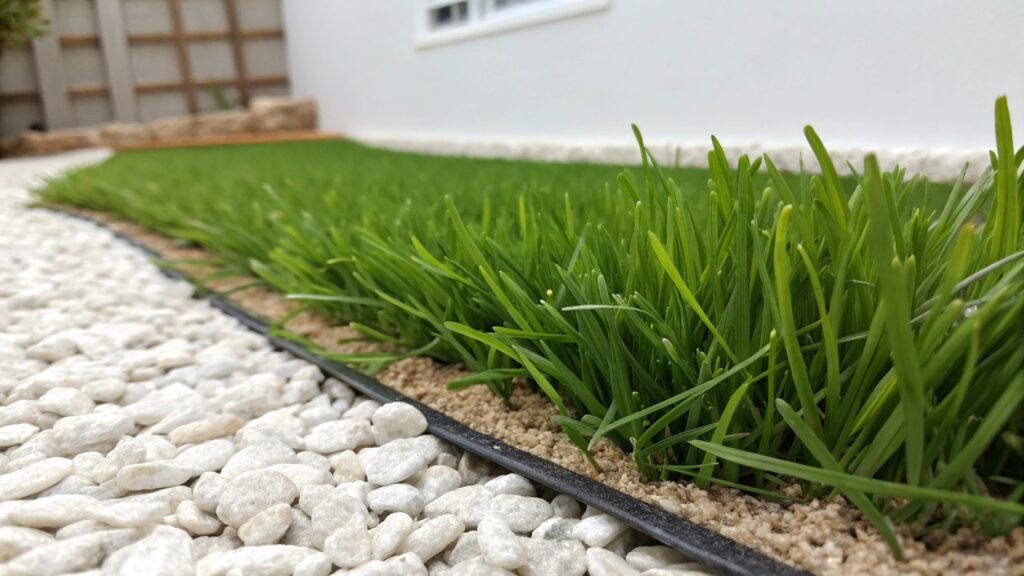
Color And Thatch
If you’re looking for synthetic turf that mimics natural grass, you should note that real grass doesn’t come in just a single shade. Uniform green grass screams fake from across the room – consider mixing it up with beige or brown thatches for the perfect natural lawn imitation. The perfect color blend will significantly improve your artificial grass realism.
Types Of Artificial Grass by Application: Finding Your Perfect Match
Different spaces require different types of synthetic grass, and therefore, choosing your turf depending on the purpose is beneficial.
Let’s look at the most common ideas and case scenarios.
The Best Artificial Grass for Dogs and Kids
When choosing the best fake turf for kids and dogs, the most important things to consider are drainage and durability. Go for nylon or polyethylene grass with a perforated backing and antimicrobial infill – to keep your space clean, dry, and odor-free.
You can also opt for low-pile, non-abrasive, and soft-blade grass to protect paws and little feet, for fun and safe playtime.
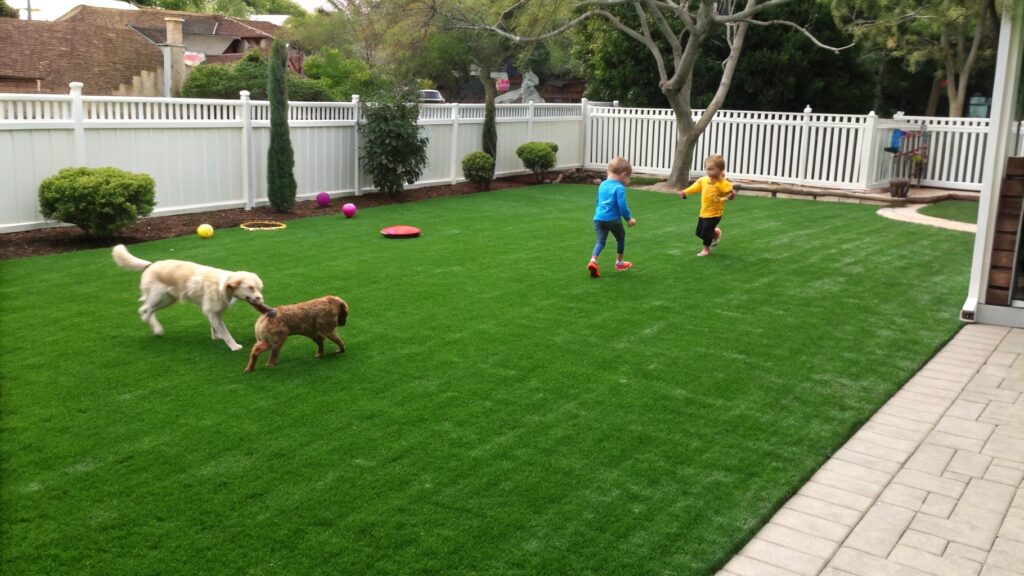
The Best Artificial Grass for Lawns and General Landscaping
For general landscaping and lawns, while function matters, aesthetics are equally as important. Choose a more realistic look comprising of a high face weight, different blade shapes, and color blends.
A lush pile-height polyethylene with realistic brown thatches is the ideal look for front yards, backyard relaxation zones, and gardens. Throw in some infill for a more natural look and stability.
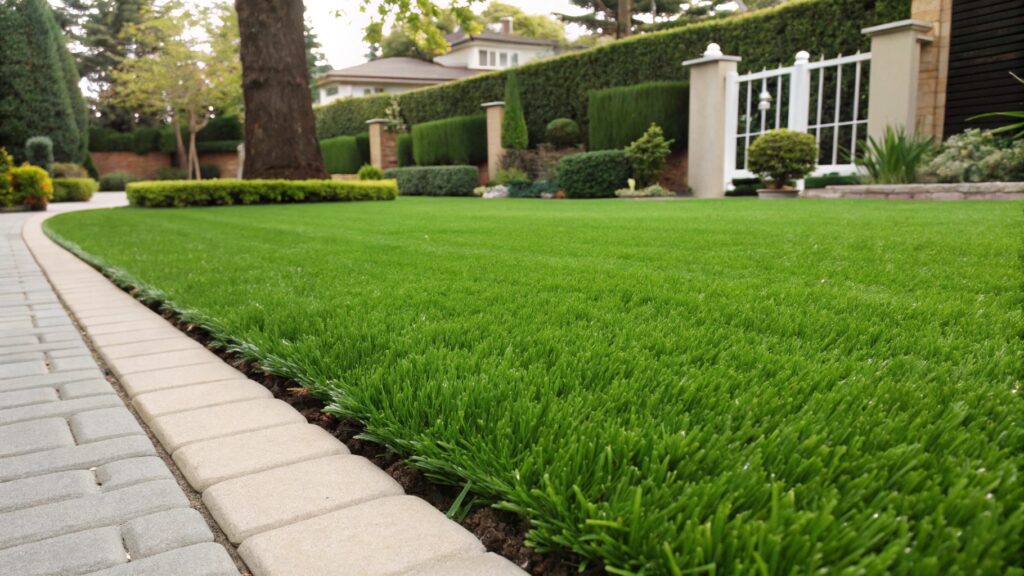
The Best Artificial Grass for Patios, Balconies and Rooftops
For such outdoor spaces, you should consider easy-to-install and lightweight fake turf with proper drainage and maximum UV protection. If you’re on a tight budget, you can opt for the polypropylene variant, but if comfort is your main concern, purchase soft, short-pile, polyethylene with perfect drainage for a green, cozy look.
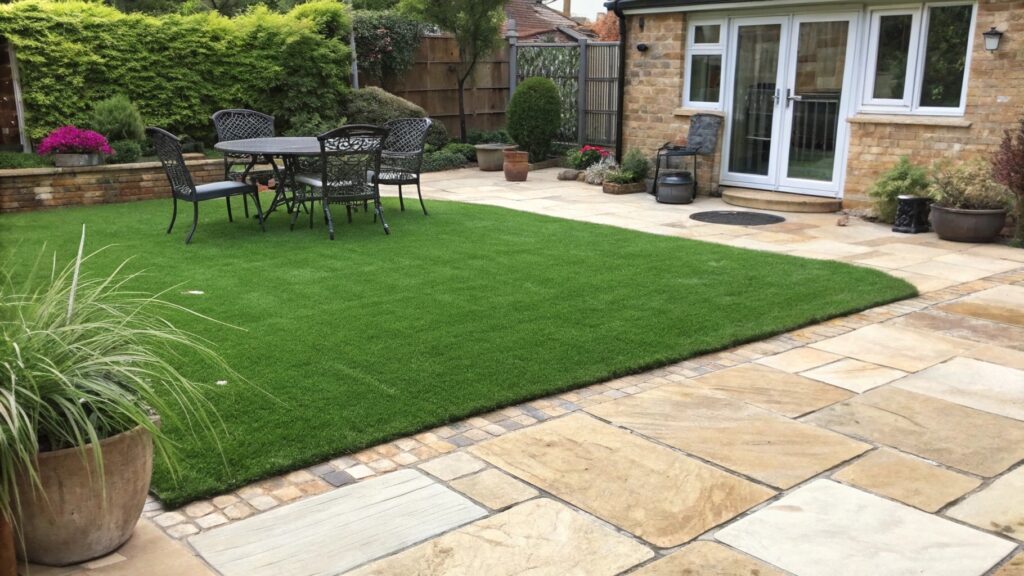
The Best Artificial Grass for Backyard Putting Greens
When it comes to putting greens, precision is everything. A short-pile, dense polypropylene or nylon offers the consistency and speed that any golfer requires. You can pair the material with the perfect infill and shock pads for a realistic feel and the ultimate ball roll.
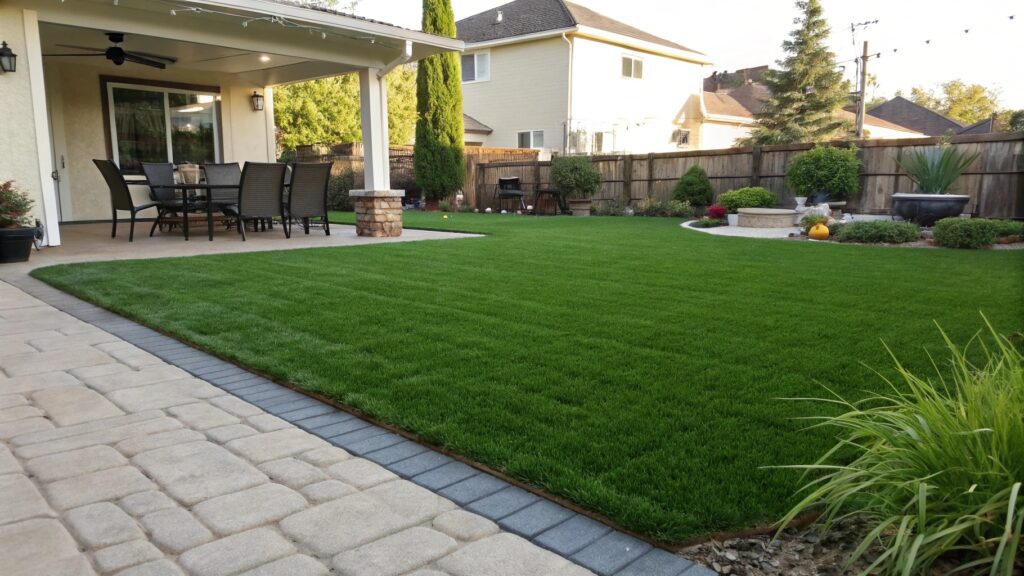
2025 Trends: What’s New in Artificial Grass Technology?
In recent years, there has been a growing demand for eco-friendly, low-maintenance turf grass. To keep up with this demand the artificial grass industry has kept on growing and evolving every day.
Here are some of the exciting innovations in 2025.
Smart Drainage Systems
There is a growing trend where artificial turf comes with tech that allows faster drainage. Most fake grass comes with advanced backing fitted with water-directing channels to curb poling issues.
Eco-Friendly Materials
The global market keeps on demanding more protection for the environment and the world in general. More and more brands are keeping up with this trend by using biodegradable materials to manufacture their artificial grass. Most infill and grass fibers in the market today are eco-friendly.
Temperature-Control Technology
Some synlawns come fitted with heat-resistant or reflective coatings which help minimize heat absorption. Such technology is becoming mainstream and helps keep fake turf cool in hot climates.
Custom Designs
Today you can order a unique design of your preferred faux grass, all thanks to customization. You must have seen custom-printed turfs, especially for sports branding or artistic landscaping with multi-colors – that’s personalization at its best!
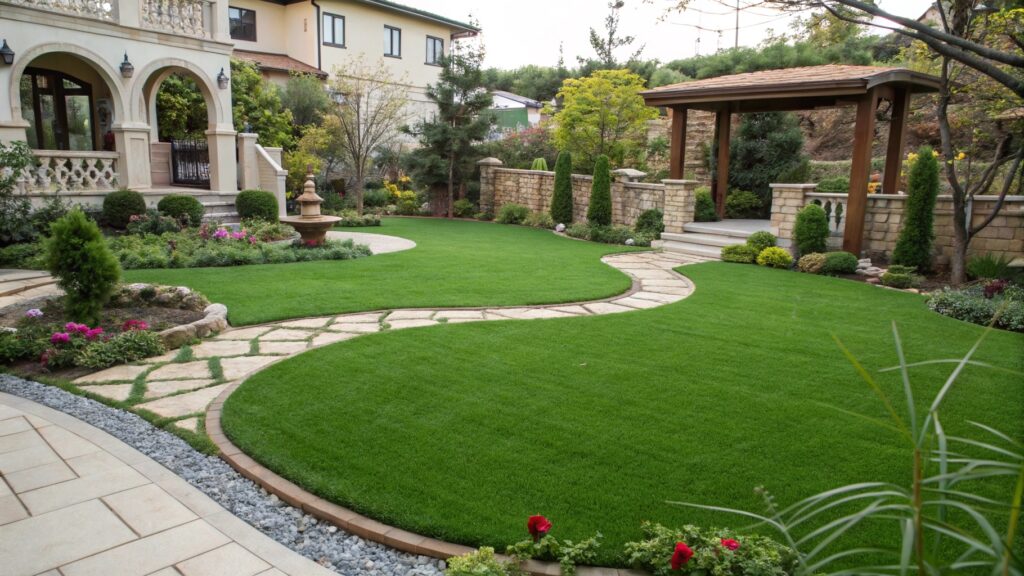
FAQs About Artificial Grass:
What is the best artificial grass for high-traffic areas?
Nylon artificial grass is your best bet for areas with high traffic. The material has strength and capacity to bounce back thus able to retain its shape even when under pressure. It holds perfectly against foot traffic, making it best for play areas, event spaces, and gyms.
How long does artificial grass last?
The durability of faux grass depends on the material of the grass, maintenance, and usage. With that said, however, high-quality grass can last anywhere between 10 and 20 years. Typically, nylon will last the longest, then polyethylene and polypropylene. Keep in mind that regular maintenance such as cleaning and brushing will extend your faux grass’s lifespan.
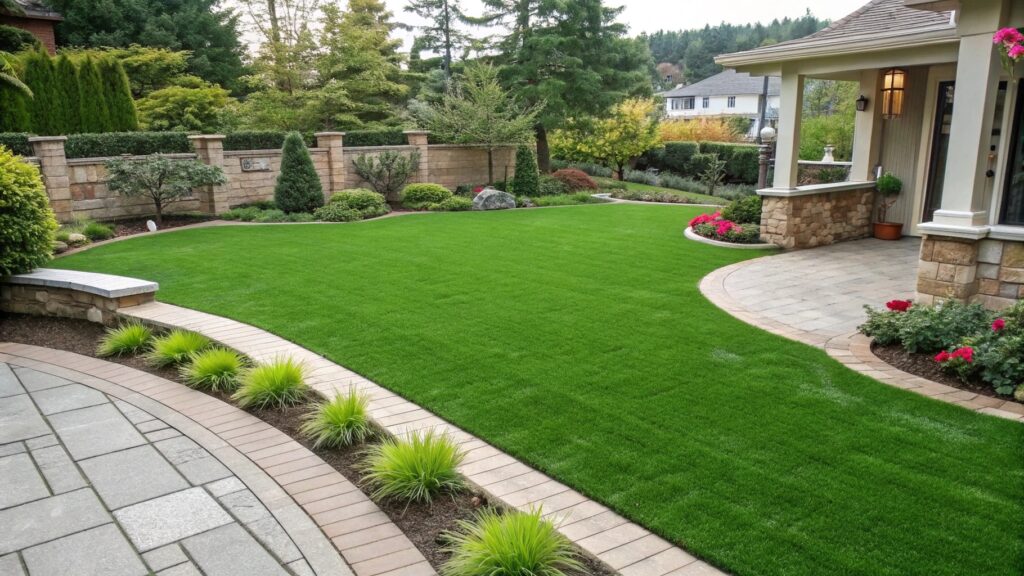
About FeelReal Artificial Grass
We offer a diverse range of artificial plants and grass products tailored to meet any need. From lush, soft turf perfect for residential lawns to highly durable options for commercial and sports applications, our collection has it all. Key features include superior UV resistance, efficient drainage, and a natural look and feel.
Final Thoughts
Fake grass has become a practical, sustainable, and stylish way to upgrade indoor and outdoor spaces. Determining the best faux grass main depends on your preferences – realism, budget, durability, or custom applications.
By clearly understanding the types, features, applications, and trends, you are now able to make a confident and informed decision that will revolutionize your space for years. Whether it is your business, balcony, backyard, rooftop oasis, or gym floor, the perfect artificial grass will turn your area into a lush green haven.
Talk to us today – there’s always the right patch of green for you!
